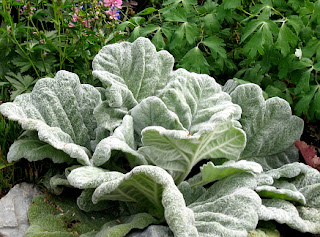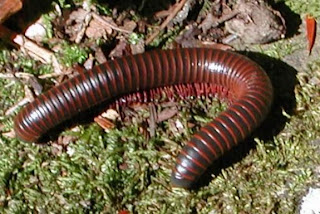With proper design and planting, your garden can become a feast for the senses. Sight. Smell. Taste. Touch. Hearing. Plants can enhance your life in so many ways, and its important to entice each of your senses with your landscape. Plant a Sensory Garden and please all your senses.
Sight
Balloon Flower. Upright stems bear whimsical flower buds shaped like hot air balloons that open to large, blue flowers with purple veins.
Red Hot Poker. With multiple varieties available, these plants produce spikes of upright, brightly-colored, red-to-orange flowers.
Jacob's Ladder. This intriguing plant forms a tidy mound of brightly variegated green and white foliage. Lovely blue flowers make a striking combination with the foliage. Excellent for use as contrast or accent in perennial borders.
Giant Sunflower. The sunflower got its name from its huge, fiery blooms, whose shape and image is often used to depict the sun.
Poppies. Great addition to borders, containers, rock gardens and scattered throughout mixed beds.
Coneflower. A well behaved, easy to grow native perennial that is favored by butterflies.
Smell
Lavender. Fragrant, large, vibrant bluish-purple flowers complement the gray-green finely textured foliage. Ideal for borders, cottage gardens and containers.
Chocolate Cosmos. Velvety textured, chocolate-scented, deep maroon flowers with darker brown center on divided dark green leaves.
Fino Verde Basil. Attractive, small-leaved bush basil. Great in the garden and the kitchen: the taste is pure sweet basil; excellent in salads
Honey Perfume Rose. Exhibits a great spicy scent and very good resistance to disease, including rust and powdery mildew.
Taste
Albion Strawberry. This newer everbearing selection offers a superior robust flavor and rich red fruit color, with excellent disease resistance. The fruit is easily identified by its long, conical, and very symmetrical shape. Albion also produces an extremely high yield.
Swiss Chard. While the leaves are always green, chard stalks vary in color. Chard has been bred to have highly nutritious leaves at the expense of the root (which is not as nutritious as the leaves). Chard is, in fact, considered to be one of the healthiest vegetables available and a valuable addition to a healthy diet.
Variegated Lemon Thyme. Colorful golden-edged green foliage is invaluable for adding color and contrast to patio containers, flowering borders and small open areas. Lemon-flavored foliage adds zest to marinades and more.
Flat Leaf Parsley. Flat-leaved parsley is preferred by some as it easier to cultivate, being more tolerant of both rain and sunshine,
and has a stronger flavor.
Touch
Lamb's Ear. Garden visitors will enjoy the soft feel of the foliage. Dense rosettes of thick, soft, velvety, silver-green leaves form a soft mat, making an excellent edging or low border.

.
Silver Sage. Silver sage is also known as silver clary or silver clary
sage. Silver sage is grown for its striking white leaves. The leaves are wide
with scalloped edges and are covered with downy hairs that give them a fuzzy
appearance.
Bunny Ears Cactus. New pads are red and appear in pairs, like the ears of a rabbit, and soon mature to dark green. Yellow flowers, easy care and unique architectural form make this valuable as a specimen, patio container or security barrier plant.
Scotch Broom. Great hedge or low screen. Interesting to the touch, its long sprays of pea-like blooms make this a lovely spring accent. A wide, dense mound displays tiny bright green leaves.
Jerusalem Sage. Golden-yellow flowers appear in whorls among woolly, wrinkled leaves for a pleasing contrast. Cutting back faded flower stems promotes continuous bloom.
Hearing
Love in the Mist. The plant's common name comes from the flower being nestled in a ring of multifid, lacy bracts. The fruit is a large and inflated capsule, growing from a compound ovary, and is composed of several united follicles, each containing numerous seeds. The capsule becomes brown in late summer, creating a rattle effect.
Canterbury Bell. This beautiful flower will attract a multitude of buzzing bumblebees to your garden.
Rattle Snake Grass. One of the easiest and most dependable ornamental grasses to grow. Use as a single specimen or mass as a groundcover. Flowers can be cut for fresh or dry flower arrangements. It creates a whispering sound when it blows in the wind.





























































